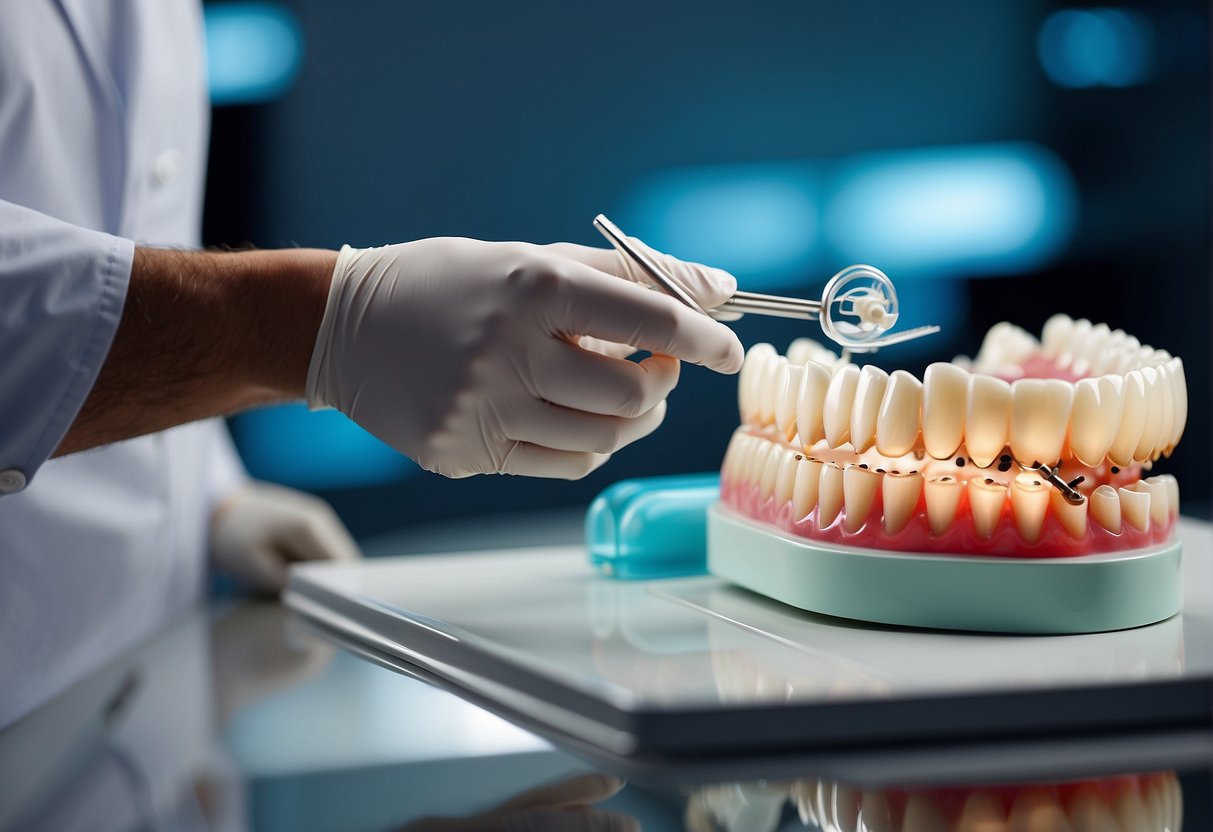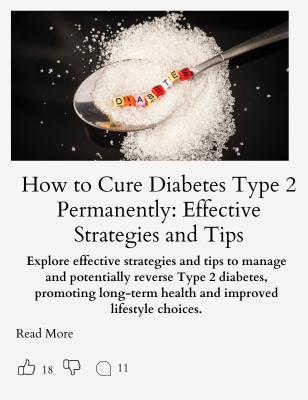Gum disease, also known as periodontal disease, is an infection of the tissues that surround and support your teeth. It is a major cause of tooth loss in adults. Because gum disease is usually painless, you may not know you have it. Generally caused by poor oral hygiene, gum disease can be prevented through regular dental checkups and daily cleaning routines. The condition ranges from simple gum inflammation, known as gingivitis, to severe damage to the soft tissue and bone that support the teeth.

Treatment options for gum disease depend on the stage of the disease, how you may have responded to earlier treatments, and your overall health. Treatments range from nonsurgical therapies that control bacterial growth to surgery to restore supportive tissues. A dental professional can remove plaque and tartar through a deep-cleaning method called scaling and root planing. Medications may also be used with treatments that include a combination of surgical procedures and dental cleanings.
Understanding how to tackle gum disease involves a multifaceted approach including professional intervention, maintaining rigorous oral hygiene practices, managing risk factors, and employing home care strategies. Consistent follow-up and maintenance are critical for managing the condition. For complete care, it is important to visit a dentist regularly for checkups and cleaning, as well as to be informed about the latest advancements and strategies for preventing gum disease.
Key Takeaways
- Effective management of gum disease includes both professional dental care and rigorous personal oral hygiene.
- Regular dental visits for cleanings and checkups are essential for prevention and early detection of gum disease.
- Long-term maintenance and follow-up are necessary to ensure continued oral health and manage gum disease.
Understanding Gum Disease
Gum disease is a common condition that affects the supporting structures of teeth. Effective management requires a clear grasp of its causes, symptoms, and variations.
Causes of Gum Disease
- Poor Oral Hygiene: Failure to brush and floss regularly can lead to plaque buildup, which is the main cause of gum disease.
- Smoking and Tobacco Use: These habits are highly associated with the onset and progression of gum disease.
- Genetics: Some individuals are more predisposed to gum disease due to their genetic makeup.
Symptoms of Gum Disease
- Swollen or Red Gums: One of the earliest indicators of gum disease.
- Bleeding: Gums may bleed during brushing or flossing.
- Bad Breath: Persistent bad breath can be a sign of advancing gum disease.
Types of Gum Disease
- Gingivitis: This is the mildest form, characterized by gum inflammation without affecting the bone.
- Periodontitis: When untreated, gingivitis can advance to periodontitis, where the bones and fibers supporting the teeth are damaged.
Professional Treatments
Professional treatments for gum disease are crucial for severe cases and can halt damage and promote healing. These procedures are typically performed by dental professionals and should be tailored to each patient’s specific condition.
Scaling and Root Planing
Scaling and root planing is a non-surgical procedure where dental hygienists remove plaque and tartar from below the gumline. Scaling involves scraping away these deposits from the teeth, while root planing smooths the tooth root to help gums reattach to the teeth.
- Objective: Remove bacteria and prevent progression of gum disease.
- Process: Typically requires local anesthesia and may be done over several visits.
Periodontal Therapy
Periodontal therapy encompasses a range of treatments aimed at combating periodontal disease. This includes deep cleaning procedures like scaling and root planing, medication, as well as surgical interventions.
- Deep Cleaning: Essential first step to address the bacterial infection.
- Medication: Antibiotics may be applied locally in the gum pockets or prescribed orally.
- Surgical Options: For advanced stages, flap surgery or bone and tissue grafts might be necessary.
Laser Treatment
Laser treatment utilizes light energy to remove diseased gum tissue and bacteria from periodontal pockets. This approach is less invasive and may result in reduced bleeding, swelling, and discomfort compared to traditional surgery.
- Effectiveness: Can target and eliminate harmful bacteria with minimal impact on healthy tissue.
- Recovery: Patients typically experience quicker recovery times.
Gum Graft Surgery
Gum graft surgery involves taking tissue from one part of the mouth and attaching it to the areas where the gums have receded. This surgery can reduce further recession, cover exposed roots, and restore gum tissue to a healthy state.
- Donor Sites: Palate or another donor source.
- Benefits: Prevents root decay and sensitivity, and improves the aesthetics of the gum line.
Daily Oral Hygiene
Daily oral hygiene is crucial in preventing and treating gum disease. By adopting a routine that includes proper brushing, flossing, and the use of mouthwash, an individual can significantly reduce the risk of gum disease.
Proper Brushing Technique
To effectively remove plaque and bacteria, one should brush their teeth for at least two minutes, twice a day. The brush should be held at a 45-degree angle to the gums, using short, gentle strokes to clean all surfaces of the teeth.
- Toothbrush: Use a soft-bristled brush to avoid irritating the gums.
- Toothpaste: Opt for fluoride toothpaste with antimicrobial properties.
Flossing and Interdental Cleaning
Flossing once a day helps remove plaque and food particles from between teeth and under the gumline where a toothbrush cannot reach.
- Floss: Gently insert the floss between two teeth and curve it around the base of each tooth.
- Interdental Brushes: Use to clean between wider spaces or around bridges and braces.
Mouthwash for Gum Health
Antibacterial mouthwash can be used to reduce bacteria, freshen breath, and provide additional protection against gum disease.
- Mouthwash Type: Choose an antibacterial or antiseptic formulation designed for gum health.
- Usage: Rinse once or twice daily, following the product’s instructions.
Risk Factor Management
Effective management of risk factors significantly contributes to the prevention and treatment of gum disease. Addressing specific behaviors and health conditions can reduce the chances of developing gum disease or mitigate its progression.
Smoking Cessation
Smoking is a major risk factor for gum disease. Patients are advised to quit smoking to improve oral health. Here are strategies to support smoking cessation:
- Professional support programs: They provide guidance and resources for quitting.
- Nicotine replacement therapies: Options include patches, gums, and lozenges.
Nutrition and Gum Disease
Proper nutrition plays a crucial role in maintaining healthy gums. Adequate intake of vitamins and minerals supports the immune system and reduces inflammation. Key dietary recommendations include:
- Increase Vitamin C: Foods rich in Vitamin C like oranges and strawberries can help strengthen gum tissue.
- Calcium intake: Dairy products and leafy greens contribute to strong teeth and bones.
Managing Diabetes
People with diabetes are at a higher risk for gum disease due to potential impairments in blood flow and an increased susceptibility to infection. Diabetics can take several steps to manage their condition:
- Regular monitoring of blood sugar levels: Keeping diabetes under control is critical for gum health.
- Routine dental visits: Periodic check-ups allow for early detection and management of oral health issues related to diabetes.
Home Remedies
Home remedies may provide relief for mild cases of gum disease, also known as gingivitis. It’s important to note that they should complement, not replace, standard dental care practices.
Saltwater Rinse
A simple saltwater rinse can help reduce gum inflammation and cleanse the oral cavity. To create the solution:
- Dissolve 1/2 teaspoon of salt in 8 ounces of warm water.
- Swish the mixture in your mouth for 30 seconds.
- Spit it out without swallowing.
- Repeat twice a day for best results.
Oil Pulling
Oil pulling, a traditional Ayurvedic practice, involves swishing oil in the mouth to remove bacteria and promote oral hygiene.
- Use 1 tablespoon of a high-quality oil such as coconut oil.
- Pull the oil through the teeth for 15-20 minutes.
- Dispose of the oil in the trash, not the sink.
- Rinse the mouth with warm water and brush teeth afterward.
Turmeric Gel
Turmeric gel may help to reduce plaque and gingivitis due to its anti-inflammatory effects.
- Apply a turmeric gel, available in health stores, to the gums.
- Let it sit for 10 minutes.
- Rinse the mouth with water.
- Use daily to help combat inflammation and plaque buildup.
Medications for Gum Disease
Several medications are effectively utilized in treating gum disease, specifically targeting infection, controlling plaque, and managing pain. Each type of medication serves a distinct purpose within a comprehensive treatment plan.
Antibiotic Therapy
Antibiotics are used to target the bacterial infections that can accompany gum disease. Systemic antibiotics, which include oral medications such as amoxicillin and doxycycline, can reduce the bacteria responsible for gum infection. Depending on the severity, a dentist or periodontist may prescribe:
- A course of oral antibiotics for widespread infection
- Topical antibiotics such as minocycline microspheres or doxycycline gel for localized areas
Antimicrobial Mouthwash
An adjunct to daily oral hygiene routines, antimicrobial mouthwashes containing chlorhexidine or cetylpyridinium chloride can significantly reduce plaque and gingivitis. They are generally available by prescription and are used as follows:
- Chlorhexidine gluconate mouthwash: Rinse with 10-15 ml for 30 seconds twice daily
- Cetylpyridinium chloride mouthwash: Product instructions vary; follow prescribed use
Pain Management
To address discomfort caused by gum disease, over-the-counter pain relievers and prescription medications are available. They alleviate pain and reduce inflammation. Commonly recommended analgesics include:
- Ibuprofen: 200-400 mg every 4-6 hours as needed
- Acetaminophen: 500 mg every 4-6 hours as needed
- Prescription strength medications for more severe pain
Follow-Up and Maintenance
Effective management of gum disease requires ongoing care and vigilance. These strategies ensure the long-term health of gums following treatment.
Regular Dental Check-Ups
Patients should schedule dental check-ups every six months. During these visits, dentists will:
- Examine gums for signs of disease progression.
- Remove plaque and tartar that brushing and flossing may miss.
For those with a history of gum disease, more frequent visits may be necessary.
Long-Term Care Strategies
Maintaining healthy gums involves daily commitment and the right techniques. Patients are advised to:
- Brush teeth twice daily using fluoride toothpaste.
- Floss daily to remove plaque between teeth.
- Use a therapeutic mouthwash to reduce bacteria.
- Avoid tobacco products which can exacerbate gum disease.
Patients with gum disease should follow these guidelines rigorously to prevent recurrence.
When to See a Dentist
Individuals should consider scheduling a visit to a dentist if they notice any of the following symptoms of gum disease, also known as periodontal disease:
- Persistent bad breath or a bad taste in the mouth
- Gums that are red, swollen, tender, or bleeding
- Gums that are pulling away from the teeth
- Loose or separating teeth
- Changes in the way teeth fit together when you bite
- Changes in the fit of partial dentures
Visiting a dentist for regular check-ups is crucial, even if symptoms are not present, as early stages of gum disease can be asymptomatic. A dentist can offer a professional evaluation and diagnose any potential issues before they become severe. Here is a simple guideline on when to seek dental advice:
| Situation | Action Recommended |
|---|---|
| No symptoms | Bi-annual check-ups unless advised otherwise |
| Mild symptoms (redness, mild bleeding) | Schedule appointment promptly |
| Moderate to severe symptoms | Seek immediate dental care |
Early intervention by a professional is essential for preventing progression and ensuring the best outcomes in treating gum disease. Remember, timely action can save both gums and teeth.
Prevention Strategies
Preventative care is essential to avoid gum disease, with focus on lifestyle adjustments and the use of specific dental products that promote oral health.
Lifestyle Changes
- Diet: Consume foods with high nutritional value, particularly those rich in vitamin C and calcium. Limit sugar intake to prevent plaque buildup.
- Smoking Cessation: Smoking is closely linked to the development of gum disease. Quitting smoking can dramatically reduce the risk.
- Hydration: Drink plenty of water to maintain saliva flow, which naturally helps to cleanse the mouth and prevent bacterial growth.
Dental Products for Prevention
- Toothpaste: Use toothpaste that contains fluoride and is approved by dental health organizations.
Active Ingredient Purpose Fluoride Strengthens tooth enamel Triclosan Reduces bacteria and plaque Xylitol Neutralizes pH and reduces plaque - Mouthwash: Incorporate a therapeutic mouthwash that targets gum health into your daily routine.
- Antiseptic mouthwashes reduce bacteria levels.
- Fluoride mouthwashes help prevent tooth decay.
Gum Disease and Overall Health
Gum disease not only affects oral health but is also linked with several systemic health issues. Recognizing the connections can lead to more comprehensive care strategies.
Cardiovascular Risks
Individuals with gum disease may have an increased risk of cardiovascular conditions. Research suggests a link between periodontal disease and heart disease, possibly due to inflammation caused by oral bacteria.
| Risk Factor | Connection with Gum Disease |
|---|---|
| Heart Disease | Bacteria from inflamed gums may enter the bloodstream, potentially leading to arterial plaque. |
| Stroke | Several studies indicate a possible association between gum disease and stroke. |
Gum Disease and Pregnancy
Pregnant women with gum disease might face additional health challenges. The condition has been associated with preterm births and low birth weight babies.
- Preterm Birth: Infection and inflammation in gum tissue can increase substances in the body that induce labor, resulting in preterm birth.
- Low Birth Weight: There is evidence suggesting a relationship between gum disease and babies being born at a low birth weight. This can have long-term effects on a child’s health.
Innovations in Gum Disease Treatment
Recent advancements have significantly improved the management of gum disease. Laser therapy, for instance, has become more prevalent as a less invasive alternative that targets diseased gum tissue while preserving healthy areas. Studies suggest that laser therapy can reduce bacteria levels and promote reattachment of gums to teeth.
Antibiotic microspheres represent another modern approach. These tiny particles deliver medications directly into the gum pockets, fighting infection efficiently. The controlled release of antibiotics provides sustained benefits and helps in reducing the need for systemic antibiotics.
The practice of guided tissue regeneration (GTR) has evolved as well. This method involves placing a barrier membrane between the bone and the gum tissue, allowing the bone and connective tissue to regenerate without interference from faster-growing gum tissue.
In terms of diagnostics, the development of point-of-care testing kits has enabled dentists to detect the presence of specific bacteria quickly, streamlining the choice of treatment.
| Innovation | Description | Benefit |
|---|---|---|
| Laser Therapy | Using targeted laser light to remove infected tissue | Minimizes damage to healthy tissue |
| Antibiotic Microspheres | Direct application of antibiotics to gums | Delivers concentrated treatment |
| GTR | Promotes selective regeneration of dental tissues | Encourages natural regrowth of bone |
These treatments and diagnostics are significant steps forward in the comprehensively-tailored management of gum disease. Dental professionals are now equipped with more effective tools to combat this prevalent condition, contributing towards improved patient outcomes.
Frequently Asked Questions
In addressing the concerns regarding gum disease, this section provides clear, authoritative answers to common inquiries.
What are the effective antibiotics for treating periodontal disease?
Antibiotics such as doxycycline, metronidazole, and amoxicillin are often used to combat bacterial infections in periodontal disease. Their application varies from topical gels to oral medication, prescribed based on the specific needs of the patient.
How can one identify the healing process of gingivitis?
Healing gingivitis is marked by reduced swelling, redness, and bleeding of the gums. As treatment progresses, gums should appear firmer and pinker, signaling improving oral health.
What are the primary causes of gum disease?
The primary causes of gum disease include plaque buildup, poor oral hygiene, smoking, and genetic predisposition. It can also be exacerbated by factors such as diabetes, medications that reduce saliva flow, and hormonal changes.
What are the different stages of gum disease, and how are they significant?
Gum disease progresses from gingivitis, characterized by inflamed gums, to more severe periodontitis, where there’s damage to the bone and connective tissue. Identifying the stage is crucial for appropriate treatment and to prevent tooth loss.
What options are available for professional gum disease treatment?
Professional treatments include deep cleaning procedures like scaling and root planing, flap surgery to remove tartar deposits, and bone and tissue grafts to regenerate lost structures. A dentist can tailor treatments to the severity of the disease.
Is it possible to treat gum disease effectively at home?
While professional treatments are necessary for advanced gum disease, early stages like gingivitis can be managed with diligent at-home care. This includes proper brushing, flossing, and using antiseptic mouthwash. However, regular dental check-ups are essential for monitoring and maintaining gum health.


















